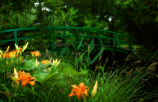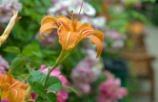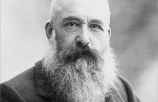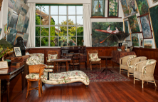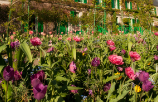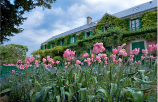Interviews
Sylvie Patry: “Claude Monet exuded natural leadership”
The ‘Paris 1874: the Impressionist Moment’ exhibition tracing the origins of the artistic movement left Musée d’Orsay on 14 July to move to the National Gallery of Art in Washington, where it reopens on 8 September. We chat with Sylvie Patry, one of the two exhibition curators.
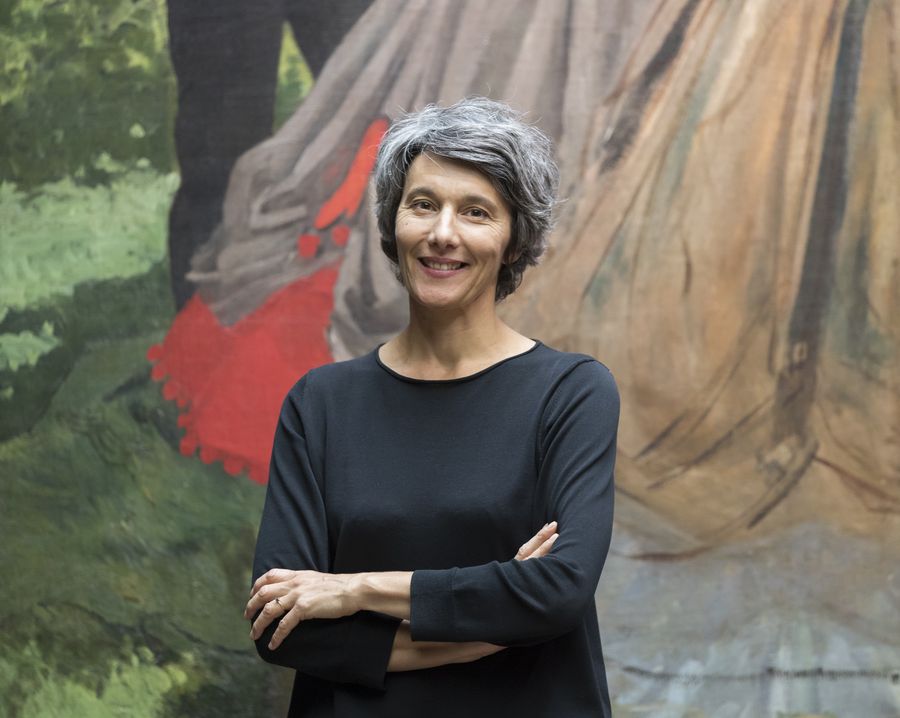
© musée d’Orsay – Sophie Crepy
‘Paris 1874: the Impressionist Moment’ features a selection of artworks that appeared in the first impressionist exhibition (15 April to 15 May 1874). Were you aiming to not only recreate the display but also the historic and artistic context?
Indeed. We wanted to revisit the circumstances that led those artists to join together. Our goal was to show that the 1874 exhibition was initially based on artistic strategy, friendship and network considerations. From that base, the movement’s identity gradually emerged.
You have focused on demystifying this period, during which impressionism was founded. What is your take on it?
Using new research, we wanted to break away from its ‘mythology’ but this in no way detracts from the exceptional nature of the exhibition, which marked the launch of impressionism. Firstly, you need to understand that these artists did not come together for purely artistic reasons. Having been rejected by the Salon, they wanted to show their artworks directly to the public as part of a commercial exhibition. But what eventually resulted from that exhibition was not their primary intention. The impressionists, as we call them today, were actually in the minority at the exhibition. Yet it was still an unprecedented event as nobody had ever seen so many artworks of that kind gathered in one place. We also wanted to show that there was no complete antagonism between modern and traditional artists. It wasn’t one side against another. There was some opposition but there was also complementarity and sometimes even permeability between the independent artists and those operating under the Salon system. The impressionists offered an eclectic range, as did those at the Salon. There was no ‘official’ or ‘impressionist’ way of painting.
Consequently, what is the modern interpretation of that now legendary exhibition?
The core meaning is one of affirmation of the artists’ strength, independence and freedom, for the very first time and with a strength of conviction, both in how the exhibition was designed and received and in the artistic freedom it inspired. The criteria for admission into this exhibition was not set by a panel or shared tastes, but by the artists themselves. The artists chose what to display, and how to display it. The artists were able to have full control over how to promote and share their artworks. This confirmed that the artists, with their way of seeing things and their way of painting, played a key role.
Let’s come back to Claude Monet’s role in organising this exhibition and the movement’s emergence…
In 1867, all of these young artists were rejected by the Salon and they became angry. There was a pressing need to find another way. Claude Monet was central to those discussions and held a certain authority among his colleagues. They admired his determination and his painting method. In fact, Claude Monet had already drawn more interest than the others. He had enjoyed great success in 1866 with his painting of Camille or the Woman in a Green Dress. One critic had even considered the artwork would be purchased by the Luxembourg Museum, which was the museum of modern art at the time. In addition, Claude Monet exuded natural leadership and embodied an authority figure. He played a central role in the project’s creation. Monet, along with Pissarro and Degas, was one of the biggest contributors to preparing the exhibition. He exhibited a variety of his artworks at the exhibition including the most expensive artwork for sale, Luncheon on the Grass, which had been rejected by the Salon in 1870. His artworks attracted the attention of the critics, both favourably and unfavourably.
Claude Monet also exhibited his painting Impression, sunrise.
People say it caused a scandal, with everyone attacking it. But history has been rewritten, because that story is mostly false. The artwork was noticed by a critic from a smaller newspaper, Le Charivari, ten days after the exhibition opened. It and other paintings attracted the journalist’s irony. With critics unable to define this new painting style, plenty of names were coined. But this article used the word ‘impression’. The term ‘impressionism’, however, was not immediately used. It resurfaced in 1876, but caught on more in 1877 when the artists themselves embraced it for the group’s third exhibition. In fact, that was the only one to be so named out of the eight exhibitions. So Monet’s painting is considered to be impressionism’s founding artwork… But through a bit of a misunderstanding! The artwork did not immediately stir up interest. It became more famous in the 1950s before achieving the reputation it enjoys today.
What was the outcome of the 1874 exhibition? There were few sales and the company quickly wound up.
Yes it was a poor outcome. Of the 200 artworks in the catalogue, only 5 were sold, including Impression, sunrise. It was also a financial failure as the company was effectively liquidated. The artists had paid dues but they could not break even. Yet from an analytical viewpoint, it wasn’t such a failure. While they didn’t know it yet, the impressionists had made a name for themselves and attracted attention. Some 60 articles were published between April and June 1874, with only 6 or 7 being negative or vicious. Some were lukewarm but not particularly mean. In March 1875, the artists organised a public auction with very disappointing results. I surmise that the artists felt a genuine sense of failure. And they would have to wait until 1876 for another exhibition to be organised…
Is there still more to discover about the 1874 exhibition?
Hopefully. For us, it’s just one stage. We need to identify some artworks and better understand some artistic figures, like the Countess of Luchaire who was the other woman at the exhibition along with Berthe Morisot. Perhaps one day we’ll find photos of the exhibition, engravings, artists’ letters, and private correspondence. Moving beyond positivistic, factual research, we hope there will be other readings and interpretations of this event.
The 1874 exhibition was actually quite modern. In fact, it was the first group comprised solely of the artists themselves. They created a means of existing, which remains true today.
Yes, this cooperative, egalitarian system does resemble an artists’ collective. What’s different today is the existence of a monitoring system. Many people seek novelty, which wasn’t really the case in the 19th century.
Tell us about the virtual reality experience, ‘Tonight with the impressionists’, which visitors can still enjoy until 10 August.
We’ve had very positive feedback. The topic and human element lend themselves perfectly to this type of media. The project was designed to complement and closely tie into the exhibition. It’s a comprehensive product. Working with Anne Robbins, we curated the exhibition and oversaw the scientific management of the immersive experience. They are strongly coherent with each other but we vary the perspectives. An obsessive person like me won’t feel like they are reading the same thing twice! In fact, we have been innovative in the same way and with the same philosophy as the impressionists. Younger visitors love virtual reality experiences. And it’s important that museums attract new and younger audiences.


